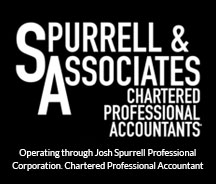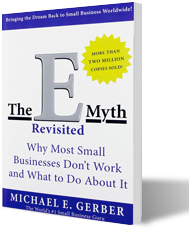Edmonton Small Business Accountant | Can Accountants Work Collaboratively
When entrepreneurs think of Edmonton small business accountant offices, they typically do not think of a collaborative environment. Traditionally, accountants work so low, on each client file, billing them per hour. However, there is one Accounting Firm in Edmonton called spiral and Associates that are actively changing the way accounting firms work, ensuring that they can deliver an extremely high level of service by utilizing collaboration.
In order for accountants to work collaboratively, this Edmonton small business accountant office discovered that they needed to change the way they set up the workstations for their accountants. This was vital in order to allow a collaborative environment for their accountants to work. Accountants still set at their own desk, but they work in teams, and this team of two or three accountants sit side-by-side at their workstations elbow to elbow with the three monitors that they utilize mounted in front of the desks one on top of each other. This way, if they need to collaborate they can easily look over at the other accountants monitors and see what their working on. Even if they are not collaborating at the moment, will still be working on the same client, and to be able to see what the other one is doing allows an intuitive workflow.
Another importance of these collaborative workstations, is that in order for these accountants to be able to see each otherís workspace, the monitors have to be large enough and high-resolution enough. At this Edmonton small business accountant, they discovered that 42 inch monitors were the right size, and that resolution mattered greatly. The reason for that, is because accountants need to be able to see a lot of text on their screen and be able to read it very easily, so the monitors that they purchased for their office were for K and resolution.
Even though each workstation has three desks, most of the accounting teams consisted of two accountants. The middle seat is often reserved for the chartered professional accountant who is able to sit in the middle seats and review the files they are working on, oversee the information and help train the accountants. The reason why training is a necessary part of this collaborative environment, is because rather than hiring high-level and already completely trained accountants, the team at spiral and Associates are hiring chartered professional accountant students who have not yet earned their designation. They need to complete three years of articling, so that they can complete their degree. Since they have already graduated the program, they have an extremely high level of knowledge, they just need experience.
By utilizing collaborative work stations in this Edmonton small business accountant office, the accountants can greatly impact how they can help their business owner clients, allowing them to get the best service they possibly can, for a regular and predictable flat fee that they will be able to anticipate and budget for on a regular basis.
When entrepreneurs are hiring Edmonton small business accountant offices to work for them, they often think of accountants as the type of businesses that work singularly, and not collaboratively. While this is often the case, there is one Accounting Office in Edmonton called spiral and Associates that is changing the way accountants do business, by embracing collaboration and teamwork, in order to service their clients to a higher degree.
By setting up their office to have workstations that allow their accountants to collaborate with each other, their allowing a higher level of service to be offered to their clients. The reason why this is so important, is because rather than charging their clients an hourly fee like many accounting offices do, there charging their clients a flat monthly fee, so it is important that there able to provide a great product quickly. When they have set up their collaborative workstations at this Edmonton small business accountant office, they put an emphasis on fast computers with an extremely large memory. While a lot of accounting offices are moving towards a cloud-based system, that does not lend itself to speedy work, because the speed is then dependent on the Internet connection. However at spiral and Associates, they have ensured every single accountant has a 2 TB computer to work on, that not only can hold a lot of information, but it works extremely fast because it is a solid state hard drive that plugs directly into the motherboard. Working more like a cell phone then it typical hard drive, it allows accountants to store an extremely large amount of information on their hard drive, but that they can pull it up quickly, change it, save it quickly and move on to the next task.
In addition to extremely fast computers, these collaborative workstations have three monitors per desk. That means for a workstation that sits three accountants, there is nine computer monitors taking up the entire wall. Edmonton small business accountant office spiral and Associates did research to find out what the optimum number of monitors was for accounting firms. They found studies that were done in offices on the productivity level of number of monitors in offices. The study found that the productivity leap between one monitor to two was astronomical. And only four accounting firms the leap from two monitors to three monitors was just the same amount of increased productivity. The reason why they hypothesized that accountants were even more productive with three monitors, is because there is three critical components for every accountant that is working on a file. Not only do they need to be looking at the reports, they also need to be making a journal entry. As they make the journal entry they look at the report to see how that journal entry changes the report. Also, they need to have the reason why they are making that change visible as well, usually a big statements, an invoice or receipt. By having these three critical components visible at all times on three monitors, it could exponentially change how fast accountants could work.

